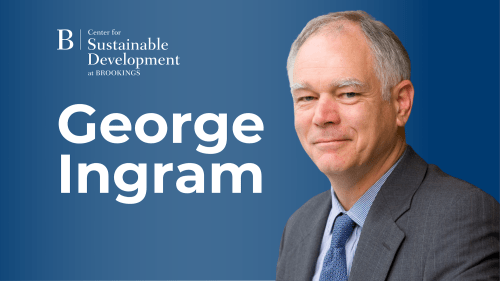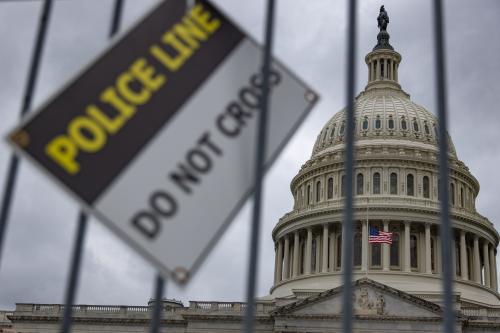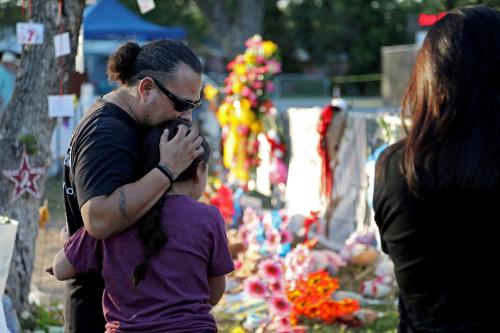“We will probably never know if [José] Padilla was a would-be terrorist,” editorialized The New York Times last week. His “trial has been a reminder of how Mr. Bush’s policy on prisoners has compromised the judicial process. And it has confirmed the world’s suspicions of the United States’ stooping to the very behavior it once stood against.”
Well, yes and no.
It is certainly true that Padilla’s trial is a big mess–a mess for which the Bush administration bears a lot of responsibility. Padilla, the American citizen long held in a naval brig as an “enemy combatant” and now facing trial in Florida on unrelated conspiracy charges, has claimed that long-term torture at the government’s hands has left him incompetent to stand trial, a claim the judge last week rejected. In addition, Padilla has asked the court to dismiss the charges against him because of the allegedly outrageous government conduct toward him. What’s more, he isn’t even being tried for any of the most serious allegations against him–the reasons why he was originally detained–since the government denied him access to counsel for years, during which time, whether by torture or more acceptable interrogation methods, it extracted information from him that no court could constitutionally admit as evidence now. The government will be lucky to emerge with a conviction on charges that are a pale shadow of what it initially alleged.
But it is too easy to see the case, as the Times and other observers do, as simply another instance of Bush administration abuse with Padilla as a victim. Writing last week in Slate, Dahlia Lithwick thundered that, “This abuse has been futile–aimed at the wrong man and carried out for years. It has tainted the entire Padilla trial and degraded those who did the abusing.” What’s more, “at the end of the day, whether Padilla is tried, convicted, hospitalized, or set free, his whole sordid story stands for the single proposition that abuse begets more abuse.”
Actually, it stands for something more–and more disturbing–than that: It stands for the proposition that, more than five years into the war on terror, America has no coherent legal strategy for thinking about those of its own who fight for the other side.
It may be hard to remember this now, but once upon a time, Padilla presented the government with a very hard case. Intelligence agencies had learned of him through the coercive interrogations of high-level Al Qaeda operatives overseas. He had a serious criminal record; as a juvenile, he had even been involved in a murder. And they had information that he was on his way here to conduct devastating terrorist attacks. Then, only eight months after September 11, 2001, he showed up at O’Hare International Airport in Chicago, Illinois, where law enforcement agents detained him as a material witness in a terrorism investigation. This was no John Walker Lindh or Yaser Hamdi–the two American citizens who were caught in Afghanistan as Taliban foot soldiers. Padilla was a genuine thug who had allegedly developed high-level Al Qaeda contacts and had been sent here to conduct operations. Five years after the fact, Lithwick can dismiss him as “the wrong man.” But in 2002, no responsible government official could have regarded him as anything other than a most extreme threat.
The government, however, had a problem: It couldn’t make a criminal case against Padilla. Its evidence consisted of intelligence that was both too sensitive to use in court and obtained by coercive means against other detainees. And Padilla himself wasn’t talking. The decision to designate him as an enemy combatant and transfer him to military custody was an effort not merely–or even chiefly–to aggrandize executive power but to prevent his release and to create a detention status under which agents could interrogate him and find out what he knew.
But in accomplishing this, the administration made several critical errors. For starters, then-Attorney General John Ashcroft dramatically announced the arrest as the foiling of a dirty bomb plot–an allegation from which the government later had to back away and which has greatly diminished its credibility since. More fundamentally, the decision not merely to hold Padilla but to keep him from contact with his lawyers and to frustrate any legal process for him was both unfair and self-defeating. Its result is that today, there is no case record to justify the government’s underlying decisions–no formal set of allegations, no official account of any evidence, and no judicial sign-off on the detention.
But these errors should not obscure the genuine difficulty of the situation the administration faced. There was probably no good way to handle Padilla. And all of the criticism of Bush’s course only invites the question how the executive branch should have dealt with him instead–and how it should handle similar figures in the future.
There exist only three possible answers to this latter question. The first is to accept what the government did here. While enemy combatant detentions are far from unheard of in American history, I can’t go there. Detention of citizens without charge, clear statutory basis, or access to counsel for an indefinite period of time just defies too many norms of modern American life. It also doesn’t work in the long run. While the government may have disabled Padilla and interrogated him, after all, it is still struggling to justify its detention of him nearly five years later.
The second possibility is to release them until prosecutors can bring charges based on admissible evidence. This may seem attractive right now, but it’s not tenable in the midst of a crisis. It’s one thing to let a criminal go in the name of limiting government, something our system does all the time–deeming the danger posed by even the mobster or the child molester as ultimately less than the danger posed by a government untethered by rigorous limits on its power. But this country has never embraced that theory in fighting foreign powers, nor could it. For it isn’t true. Suggesting that in the spring of 2002, the Justice Department should simply have turned Padilla loose reflects a complacency that only distance from September 11 could have cultivated. Releasing the next Padilla doesn’t seem like a good bet either.
The third alternative, the one I favor, is a statutory framework for handling such cases–one that would specify the legal standards, the rules of evidence, and the rights of detainees in situations where the government needs an emergency preventive detention. Such a law would give the executive branch the thing it so sorely lacked in Padilla’s case: the buy-in of both the legislative branch, which would pass the law, and the judiciary, which would supervise its administration. In exchange, the law would also limit detentions, ensure their regular review under rules that permit the detainees to defend themselves meaningfully, and prevent abusive interrogations.
The idea of preventive detention has a noxious odor in the American legal system. We lock people up, after all, for things they have done, not for things they might some day do–or so goes the mythology. But it is only mythology. Tell it to the mentally ill person whom we lock up for years because, through not fault of his own, he poses a danger to others, or even himself. Tell it to the sex offender who has served his sentence yet gets committed afterwards anyway. Tell it to the people held without bail on charges that haven’t been proven because they might flee if let loose. Tell it to the asylum seekers and immigrants the government locks up while considering their cases. Few of these people are remotely as dangerous as Padilla. All are held on explicitly preventive bases. The only difference is that the bases are authorized by statute.
Like so many legal approaches that might help the administration in the war on terror, the administration itself is the principal obstacle to such a law in this area. It contends, after all, that it has all the authority it needs. So why should it seek congressional backing at the cost of limiting its flexibility? The answer is that its current flexibility is something of a mirage. The votes on the Supreme Court to forbid detentions like Padilla’s very likely exist–which is why the administration made a point of ending Padilla’s military detention by bringing the criminal case against him before the High Court could review the matter. Unless it wants to face the same legal uncertainty in the future that it faced when confronted by Padilla, the administration has no choice but to change the legal architecture under which it labors. If it doesn’t, it will find itself in the same position it is now: waiting to lose.
The Brookings Institution is committed to quality, independence, and impact.
We are supported by a diverse array of funders. In line with our values and policies, each Brookings publication represents the sole views of its author(s).



Commentary
Op-edJosé Padilla: Would-Be Terrorist or White House Victim?
March 6, 2007